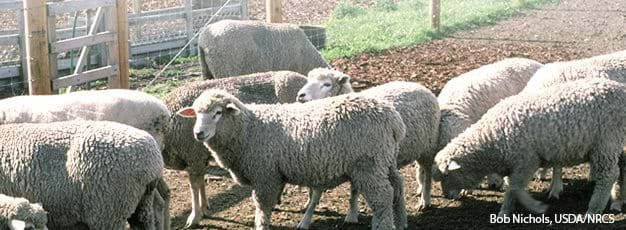Marketing Could Boost the U.S. Sheep Industry

The U.S. sheep industry is in the midst of a long-term decline. The reasons are many: reduced wool demand, low lamb meat prices, losses to predators, and labor shortage. Despite these concerns, demand for lamb meat has remained steady, and imports have increased to meet U.S. consumer needs. The trend of declining domestic supply and increasing imports could be reversed if the industry pursued a different business model. The experience of Australia and New Zealand shows that aggressive marketing and diversification of demand offer hope for the industry’s recovery.
Survey data indicate a lack of a broad consumer base, and little success has been achieved in promoting and differentiating U.S. lamb from other meats. The U.S. sheep industry focuses on high-valued cuts for the domestic market, concentrated mainly in the Northeast and Western States because of their large immigrant populations. It has neither capitalized on market segmentation nor developed export markets. Most low-valued meat is rendered or made into pet food. What little is exported goes mainly to Mexico in the form of whole mutton carcasses. In contrast, beef, pork, and poultry markets are geographically dispersed with organized export markets. In addition, they have consumers of all ages and backgrounds who buy a wider variety of cuts.
Australia and New Zealand offer a model for industry success. Lamb marketers in those countries have waged very aggressive ad campaigns aimed at clearly distinguishing their product from, and defining it as superior to, those of its competitors. Their ads, appealing to customers outside their borders, tout the fresh, wholesome, free-range, grass-fed image. Imports from Australia and New Zealand now make up more than 40 percent of U.S. lamb and mutton consumption.
Australia and New Zealand lamb and mutton exports have grown and diversified. Both countries export to a wide range of markets, including traditional markets in the European Union, the Middle East, and Papua New Guinea and newer markets in the United States, Southeast Asia, and Africa. With these diverse markets, a clear delineation among three market segments has emerged. High-priced prime lamb products sell in the developed economies, lower valued lamb products sell in developing economies, and low-priced mutton sells in both developed and developing economies for institutional catering and for further processing.
Sheep, Lamb & Mutton, by William Hahn, USDA, Economic Research Service, September 2022
Trends in the U.S. Sheep Industry, USDA/ERS, January 2004, AIB-787.


